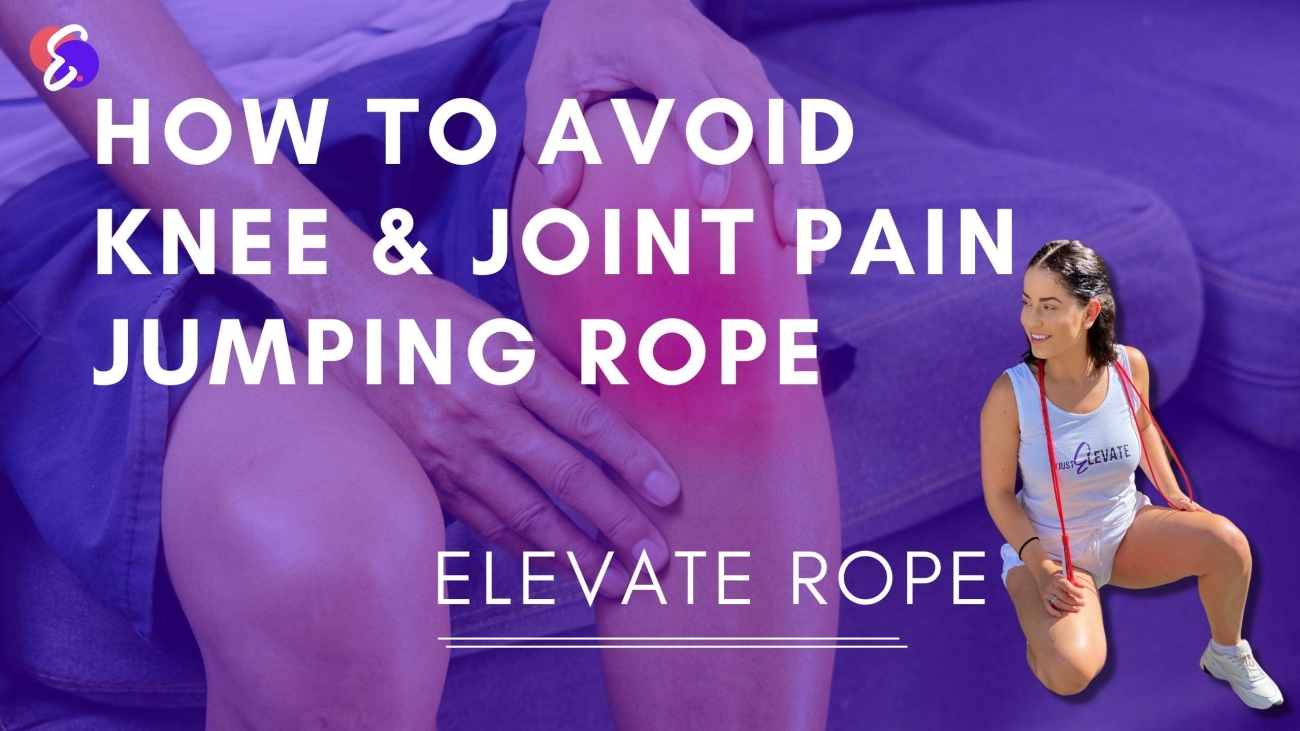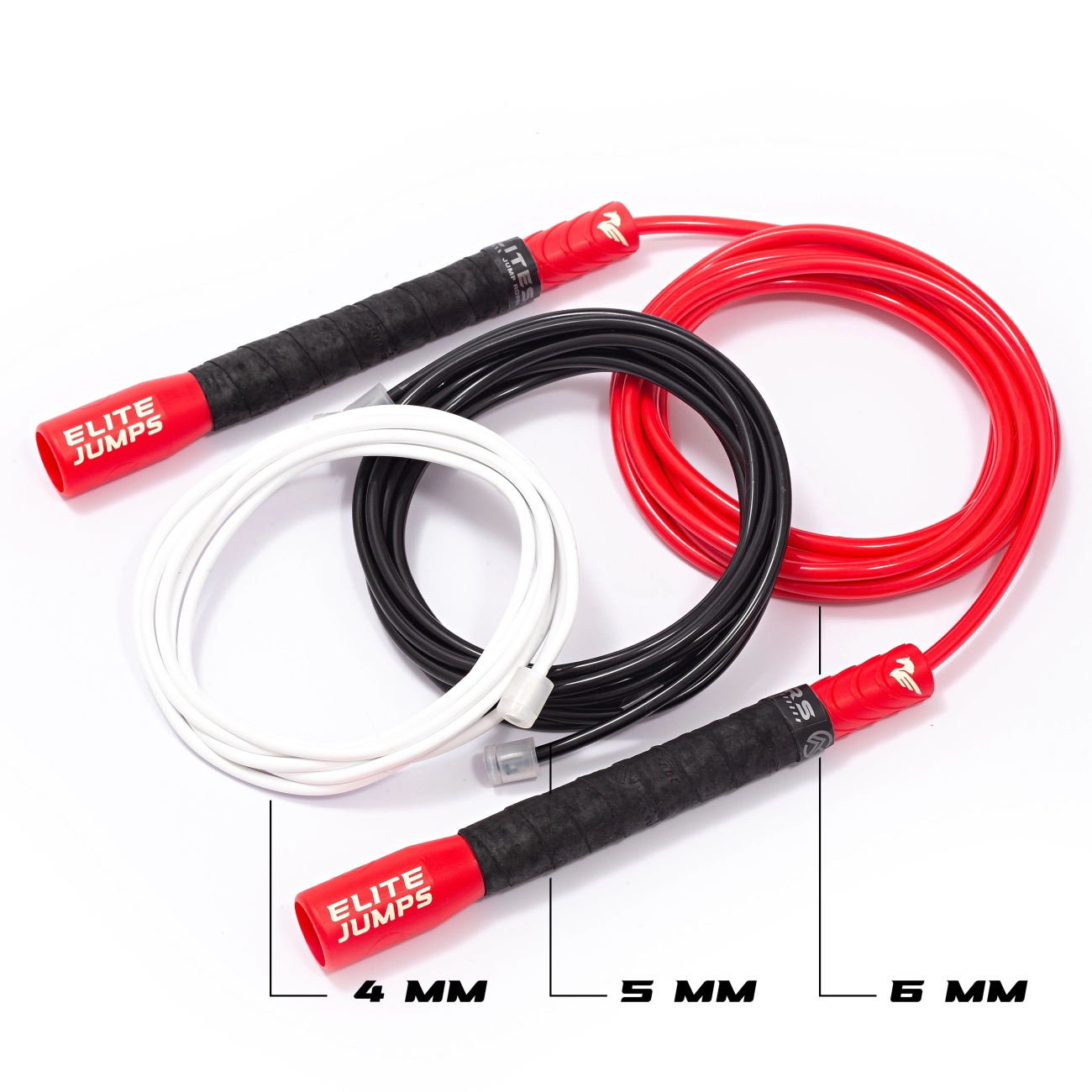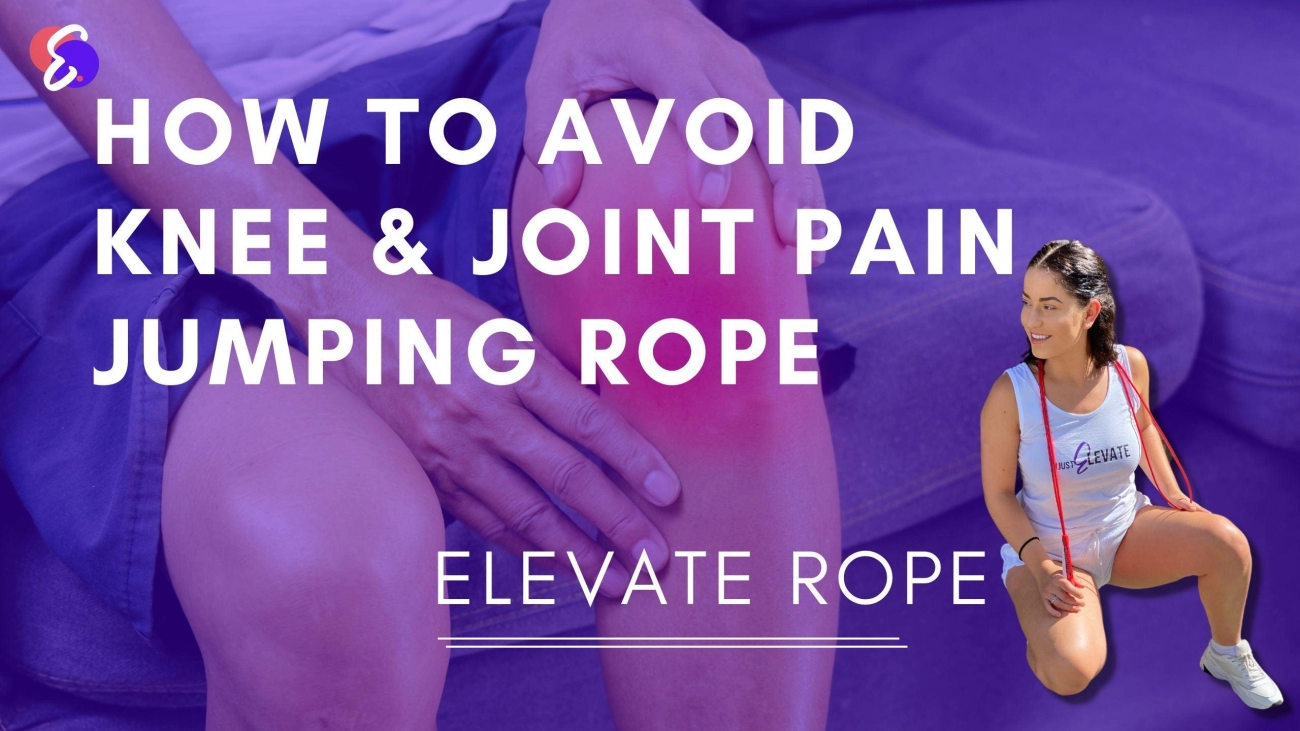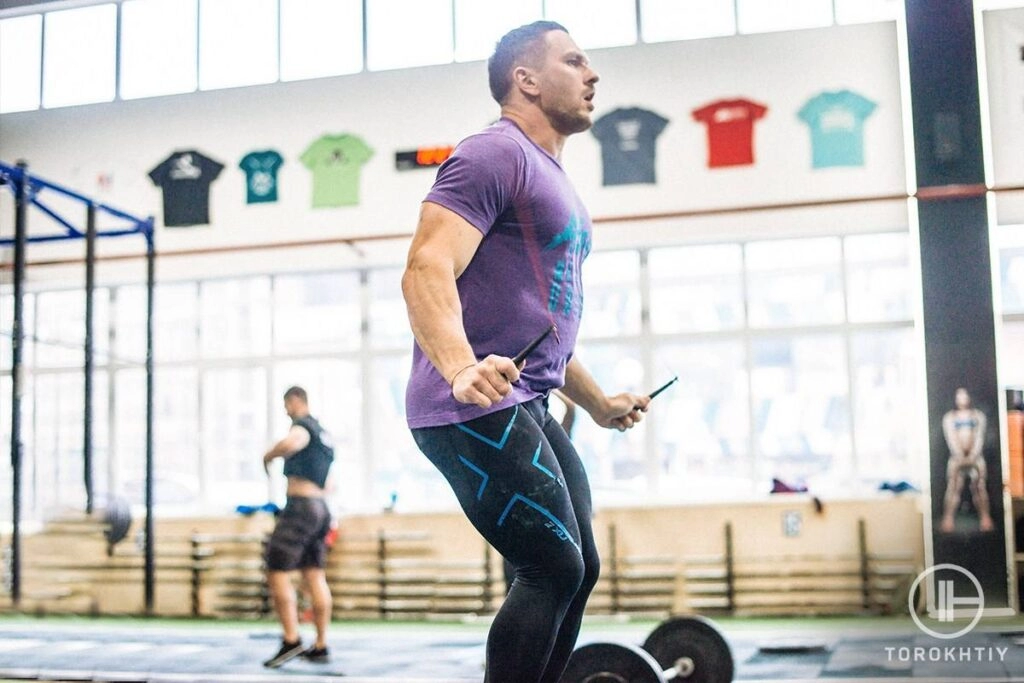Knee Impact During Jump Rope
Is jumping rope bad for knees?
Jumping rope is a dynamic exercise that involves repetitive impact on your joints, especially the knees.
How Jumping Affects Knee Joints
Each time your feet hit the ground during jump rope, your knees absorb a portion of the shock generated. This impact forces the knee joint to stabilize the body while managing forces several times your body weight. Over time, these forces can lead to knee strain, discomfort, or injury if the body is not properly conditioned or the movement is executed poorly.
Factors Influencing Knee Strain from Jump Rope
Several factors affect how much strain your knees experience when jumping rope:
- Body Weight: Heavier individuals naturally place more load on the knees. Building strength and gradually increasing intensity is key.
- Jumping Technique: Poor form, such as stiff-legged landings or excessive knee bending, increases stress on the knees.
- Surface Type: Hard surfaces like concrete cause greater impact forces compared to sprung wooden floors or rubber gym mats.
- Footwear: Shoes with adequate cushioning and support help absorb shock, protecting knees from repetitive impact.
Role of PVC Jump Ropes for Knee Safety
Choosing the right jump rope can also influence knee impact. PVC jump ropes, known for their lightweight and controlled design, enable smoother, faster rotations with less effort. This allows for rhythmical, low-impact jumps that reduce excessive joint stress.
- Lightweight Material: Reduces arm fatigue, encouraging better control and rhythmic jumping.
- Control and Precision: Helps maintain consistent jump height, avoiding hard landings.
- Durability: PVC ropes withstand high-speed skipping without adding extra resistance that could alter technique.
By combining proper technique, supportive footwear, suitable surfaces, and a quality PVC jump rope, you can significantly minimize knee impact during jumping rope. This approach promotes safer workouts, especially for beginners and those conscious about joint health. For detailed jump rope options tailored for safety and performance, consider exploring our PVC plastic jump ropes.
This balanced understanding of knee impact during jump rope sets the foundation for knowing when it is beneficial or potentially harmful, helping you progress safely.
Is Jumping Rope Bad for Your Knees Myth vs Reality

Jumping rope often gets a bad rap when it comes to knee health. The myth is that it automatically leads to knee pain or injury. However, the reality is more nuanced — scientific studies show that jumping rope, when done correctly, is generally safe and can even strengthen your knees.
What Science Says About Jump Rope and Knee Health
Research indicates that jumping rope provides a low-impact cardio workout that actually helps improve joint stability and muscle strength around the knees. The body adapts by building stronger tendons and improving knee joint function. This can reduce the risk of conditions like osteoarthritis when done moderately.
That said, problems can arise if you already have pre-existing knee injuries, arthritis, or if your jump rope form is poor. Faulty technique, such as stiff-legged jumping or landing hard on heels, can increase strain and aggravate knee joints. Jumping excessively without proper rest can also lead to overuse injuries like patellar tendinitis or runners knee.
When Jump Rope Might Be Harmful to Your Knees
Jumping rope may hurt your knees if:
- You have existing knee problems or joint conditions.
- Your jumping form is improper — landing flat-footed or locking knees.
- You are jumping on hard surfaces like concrete without shoe cushioning.
- You suddenly increase intensity or duration without conditioning.
In these cases, jumping rope can worsen pain or cause injury but is not inherently bad for the knees.
How Jump Rope Can Actually Strengthen Your Knees
With proper conditioning, technique, and gradual progression, jumping rope can:
- Build muscle strength around the knees for better joint support.
- Improve knee joint flexibility and balance.
- Enhance coordination and reduce risk of falls or twists.
- Serve as an effective part of a knee-friendly workout routine if combined with stretching and strengthening exercises.
Key Takeaways
- Jump rope is not bad for knees by default.
- Proper form, appropriate surfaces, and starting slow are essential.
- Those with knee injuries should consult a doctor before beginning.
- Jumping rope can be a safe way to improve knee health and overall fitness.
By separating myth from reality, you can enjoy the benefits of jump rope without fearing knee pain — especially when using lightweight ropes like PVC options that support controlled movement and reduce joint impact.
Common Knee Problems Linked to Jump Rope and Knee Pain
Jumping rope is a great workout, but the repetitive impact can sometimes cause knee pain or injuries if you’re not careful. The constant bouncing and landing put strain on your knee joints, especially if your form or footwear isn’t right. Here are some common knee problems linked to jump rope and what to watch out for.
Patellar Tendinitis
Also known as “jumper’s knee,” patellar tendinitis happens when the tendon connecting your kneecap to your shinbone becomes inflamed from repeated stress. This is common for people who jump rope a lot without proper conditioning or rest. It usually causes pain just below the kneecap, especially after activity.
Runner’s Knee
Runner’s knee (patellofemoral pain syndrome) involves pain around or behind the kneecap. It can develop when jumping techniques put uneven pressure on the knee joint or when muscles around the knee are weak or tight. This pain often worsens with bending or long periods of activity.
Osteoarthritis Flare-Ups
For those with existing osteoarthritis, jumping rope can sometimes trigger flare-ups due to the repeated joint impact. Though it’s low-impact compared to running, the constant load can aggravate the cartilage in the knee, leading to stiffness and pain.
Early Warning Signs of Knee Strain
It’s important to catch knee trouble early. Watch for signs like:
- Persistent knee pain during or after jumping rope
- Swelling or tenderness around the knee
- Popping or clicking sounds when you move
- Stiffness that makes bending or straightening the knee difficult
- Weakness or instability in the knee
If you notice any of these, it’s a good idea to take a break, review your technique, and see a healthcare provider if symptoms persist.
By understanding these common problems linked to jump rope knee injury, you can better protect your knees and enjoy your workout longer. Proper care and attention to how your knees feel will help prevent minor pain from turning into a serious issue.
Preventing Knee Injuries While Jumping Rope
Jumping rope is an excellent cardio workout, but it’s important to protect your knees to avoid pain or injury. Here’s how to keep your knees safe and get the most out of your jump rope routine.
Use Proper Jump Rope Technique for Knee Safety
- Keep your jumps low and soft. Avoid high-impact landings by barely lifting your feet off the ground. This reduces knee stress.
- Land on the balls of your feet, not your heels. This natural landing helps absorb shock and lessens knee strain.
- Maintain a slight bend in your knees throughout the workout to act as natural shock absorbers.
- Keep your body aligned. Head, shoulders, hips, and knees should be in a straight line to avoid twisting and uneven pressure.
Warm Up and Stretch Key Muscles
Before you start jumping, warm up your muscles with light cardio for 5-10 minutes. Include stretches focused on:
- Quadriceps and hamstrings to reduce tightness around the knees.
- Calf muscles which help with landing stability.
- Hip flexors and glutes for better support and knee alignment.
Warming up and stretching improves flexibility and prepares your knees for the repetitive impact.
Choose the Right Jump Rope for Knee Protection
Not all jump ropes are equal when it comes to knee health. PVC jump ropes are a good choice because:
- They are lightweight, making it easier to control your skipping rhythm without putting extra pressure on knees.
- The slight flexibility of PVC material absorbs some impact, reducing stress on joints.
- Adjustable length encourages proper posture and form, helping prevent knee injury.
Pick Knee-Friendly Jump Rope Surfaces
Where you jump matters a lot. Hard surfaces like concrete can increase knee impact, so aim for:
- Wooden floors or rubber mats that provide natural shock absorption.
- Avoid jumping on tile or asphalt whenever possible.
These surfaces reduce the strain on your knees and can help prevent joint pain.
Wear Supportive Footwear
Good shoes are a must. Look for footwear that provides:
- Cushioning to absorb shocks.
- Firm arch support to maintain foot alignment.
- A stable heel counter to prevent unnecessary foot movement that can stress knees.
Avoid barefoot jumping or wearing worn-out shoes which can increase the risk of knee pain.
Start Slow and Increase Intensity Gradually
Jumping rope puts repetitive stress on your knees, so don’t rush:
- Begin with short, low-intensity sessions.
- Increase your jumping time and speed gradually over weeks.
- Listen to your body and rest if you feel knee pain or discomfort.
Slow progression allows your knees and muscles to strengthen over time, reducing injury risk.
By focusing on these key areas—technique, warm up, equipment, surface, footwear, and pacing—you can enjoy jump rope workouts that are tough on calories but easy on your knees. If knee pain persists, it’s wise to consult a healthcare professional before continuing.
Who Should Be Cautious About Jumping Rope and Knee Health
Jumping rope is a fantastic cardio workout, but not everyone’s knees can handle the impact. If you have pre-existing knee problems or arthritis, you should be extra careful before starting a jump rope routine.
Here’s why you should be cautious:
- Existing knee injuries or chronic conditions like osteoarthritis can get worse with repetitive jumping.
- Improper form or jumping on hard surfaces can increase knee pain or lead to new injuries.
- Sudden high-impact workouts without proper conditioning may cause flare-ups or strain.
Consult Healthcare Providers First
It’s always a good move to talk with your doctor or a physical therapist before starting a jump rope workout, especially if:
- You experience regular knee pain.
- You have a history of knee surgery or serious injuries.
- You have arthritis or other joint-related issues.
Getting professional advice can help tailor a workout plan that’s safe and effective for your knees.
Low Impact Cardio Alternatives for Knee Safety
If jumping rope feels risky or your knees hurt, consider these knee-friendly cardio options that put less stress on your joints:
- Elliptical machine workouts
- Swimming or water aerobics
- Cycling or stationary bike
- Walking or hiking on even surfaces
These low impact exercises can help you stay fit without risking knee injury.
Bottom line: If your knees aren’t in the best shape, don’t push jump rope too hard. Get a thorough checkup, start slowly, and know your limits. Your knees will thank you.
Benefits of Using PVC Jump Ropes for Knee Safety

When considering if jumping rope is bad for knees, the type of jump rope you use plays a major role. PVC jump ropes are a popular choice for protecting knees because of their design and material benefits.
Lightweight and User Friendly Design
PVC jump ropes are lightweight, which means less effort is needed to swing the rope. This helps beginners and seasoned jumpers keep a controlled pace and reduces the chance of awkward movements that can strain the knees. A lighter rope allows you to focus more on your jump rope technique and smooth landings, which are key to protecting your joints.
Durable Material for Controlled Skipping
The PVC material is tough but flexible, offering durability while allowing smooth rotation. With a durable PVC jump rope, you avoid sudden jerks or tangles that might throw off your rhythm and cause extra knee impact. This controlled skipping lessens repetitive stress on your knees, lowering the risk of common problems like jump rope knee pain or injury.
Adjustable Length for Proper Jumping Posture
Having an adjustable PVC jump rope means you can customize the length to fit your height and space perfectly. Proper rope length helps maintain good posture and keeps your jumps low and efficient. This minimizes unnecessary knee bending or overextension, both of which can contribute to knee strain.
Why PVCJumpRope.com Products Contribute to Safer Jumping
At PVCJumpRope.com, we specialize in high-quality PVC jump ropes designed with knee safety in mind. Our ropes combine lightweight construction, durability, and easy adjustability to support a safe and effective workout. Using our products, you are more likely to maintain proper form and avoid knee injuries associated with poor technique or unsuitable equipment.
For those looking to reduce knee strain while improving their cardio routine, choosing the best jump rope for knees like our adjustable PVC jump ropes is a smart start. To learn more about our product features, check out our adjustable PVC jump rope page and see why so many in the US trust our jump ropes for a knee-friendly workout.
FAQs About Jumping Rope and Knee Health
Can Jumping Rope Worsen Arthritic Knees
Jumping rope can be tough on arthritic knees if not done carefully. The repeated impact can aggravate joint pain and swelling in people with knee arthritis. However, with proper technique, softer surfaces, and suitable footwear, some people with mild arthritis may still enjoy jumping rope as part of their workout routine. It’s crucial to listen to your body and avoid high-impact jumping if you experience pain or discomfort.
How Often Can I Jump Rope Safely
The safe frequency of jumping rope depends on your fitness level, knee health, and exercise intensity. For beginners or those with knee concerns:
- Start with short sessions (5-10 minutes) a few times a week.
- Gradually increase duration and frequency as your knees get stronger.
- Pay attention to how your knees feel after workouts; if there’s persistent pain, reduce or pause the activity.
Consistency is key, but overdoing it raises the risk of knee injury from jumping rope.
Should I Stop Jumping Rope If I Feel Knee Pain
Yes, stop jumping rope if you feel knee pain to prevent further injury. Pain is your body’s warning sign that something isn’t right. Continuing to jump with knee pain can lead to more serious problems like tendonitis or worsening of existing conditions.
Instead:
- Rest and apply ice if needed.
- Check your jump rope technique, surface, and footwear.
- Consider consulting a healthcare professional before resuming.
Pain-free jumping with good form and the right equipment—like lightweight PVC jump ropes known for better control—can help protect your knees and keep your workouts safe and effective.
For safe and knee-friendly jumping, explore our range of adjustable PVC jump ropes designed to help maintain good posture and reduce knee strain.



